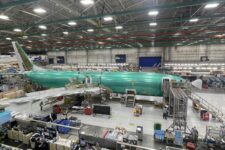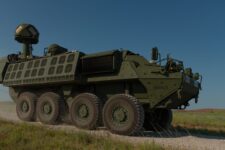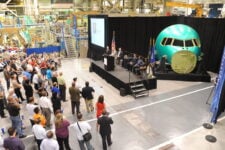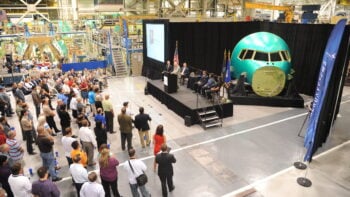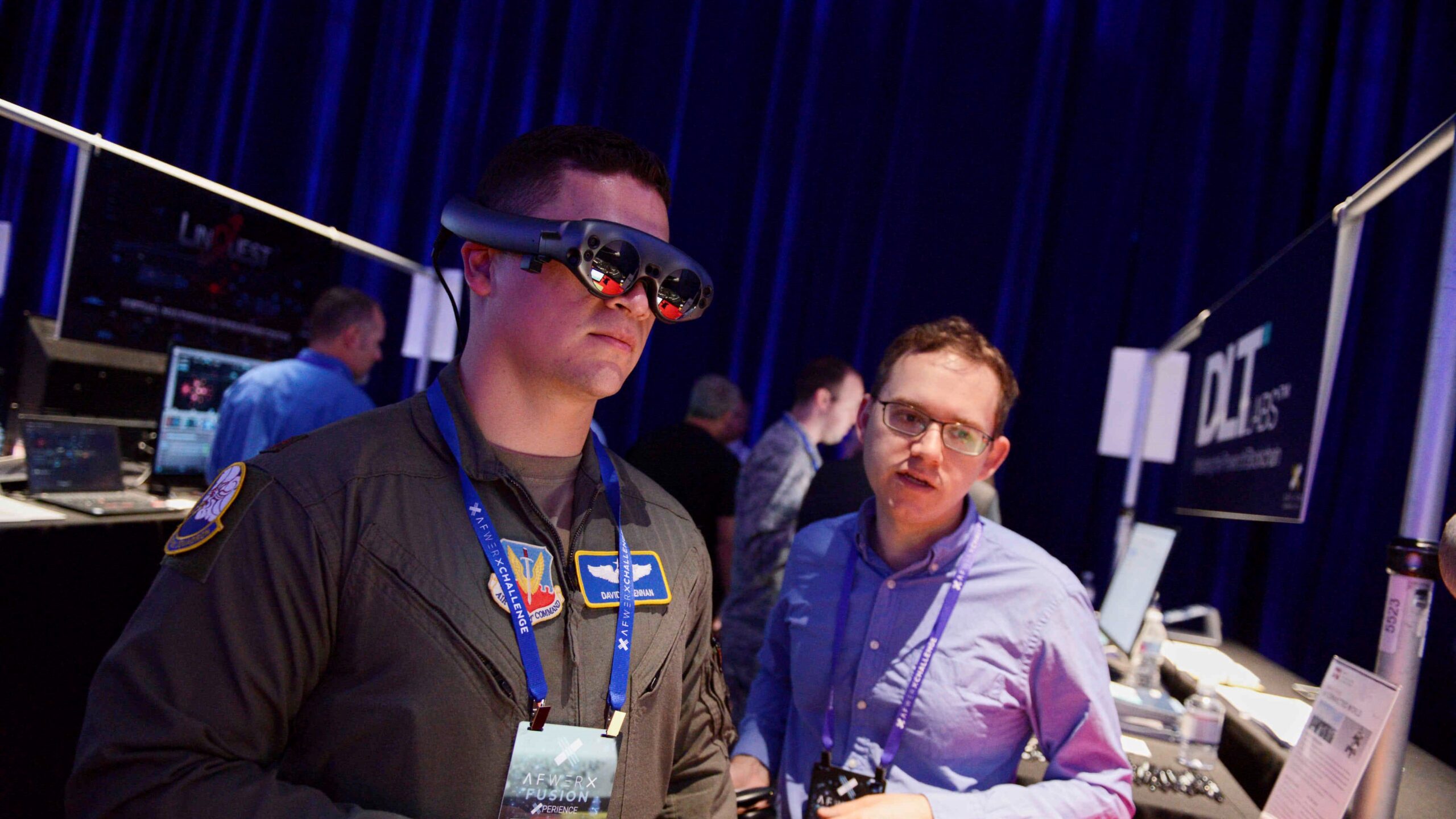
Getting commercial technology into the hands of warfighters is going to take new use of OTAs. (U.S. Air Force/Bridget Bennett)
Spend any time in national security acquisition circles and the question of how best to use Other Transaction Authorities will inevitably come up. In this analysis, Christopher Zember argues that it’s time for the Pentagon to open things up and use OTAs to their full potential — or lose a one-sided war with the commercial sector’s money.
Other Transaction Authorities originated in the 1950s, as a tool to increase speed and flexibility to access emerging technologies. Seven decades later, the peer challenger may be different — China versus the Soviet Union — but the same overall issue remains: the Pentagon still is only accessing a small portion of the market producing the technologies shaping the future of security.
It’s not for a lack of trying; the DoD has launched several initiatives and offices charged with accomplishing this goal. But these efforts remain on the periphery of defense spending, while OTAs (the agreements written using Other Transaction Authority) are treated as “alternative” acquisition vehicles, to be used only in a narrow set of limited circumstances.
Congress has a different view. Building on their 2015 authorization to use OTAs for production of defense systems, Section 824 of the Fiscal Year 2022 National Defense Authorization Act requires the Secretary of Defense to explore the merits of expanding OTA authorities, including allowing use for procurement and sustainment. Herein lies an opportunity for the DoD to harness OTAs to unlock the potential of the broader technology market, by substantially broadening the funding available to commercially-oriented companies.
Indeed, now is the right time to make OTAs mainstream acquisition vehicles. The DoD has been slow to expand their use for production, but where they have done so, evidence points to substantial value. The inherent flexibility of OTAs is why the Pentagon was so successful in addressing the rapid acquisition needs of the COVID-19 pandemic — along with a pre-existing relationship between the government and major vaccine developers that was built through long-standing OTA consortia. And last year, a two-year study of OTAs resulted in a number of positive findings, including affirmation that OTAs not only meet the core principles of public procurement, but even outperform standard contracts in the area of competition.
And yet, OTAs are still treated as alternative acquisition vehicles, exceptions to the standard way of doing business. Their use is typically limited to extraneous programs, or overlaid with cumbersome requirements borrowed from the 2,300-page Federal Acquisition Regulation (FAR).
DoD officials have plainly recognized the mutual interests between the defense and commercial markets. They clearly understand that the US is competing with China for access to these commercial technologies. Headlines abound in defense-oriented and broader public media highlighting the moral reluctance of many commercial technologists to engage in business with the DoD, while Silicon Valley has consistently bent over backwards to ensure access to the Chinese market.
Meanwhile, the Pentagon’s complex acquisition processes, including self-imposed limitations on the use of OTAs, result in practical barriers for the companies who are willing to work on American defense issues. In essence, the DoD is competing with the commercial market — and this is not a competition it can win.
Despite saying the right things about dual-use technology and the need to simultaneously serve defense and commercial needs, the DoD has inevitably remained focused on the defense only side of this equation — which, simply put, is not a viable plan for technology firms outside of the Beltway set. The commercial market is of substantially greater value than defense, even in the wildest dreams of the most aggressive defense hawks.
As much as acquisition reforms, in both policy and practice, have made contracting with the government easier, it is still vastly different than commercial business transactions. Anytime the DoD imposes requirements or delays on a company that is willing to work with it, it tempts those firms — many with little funding margin, with return on investment targets for their backers — to turn their attention fully to non-defense markets.
It doesn’t need to be this way. OTAs were established to allow the government to work in sync with the commercial market, not in competition against it — a vital reality to ensure the US has a fighting chance in the recent return to Great Power Competition. The DoD needs to use OTAs to enable commercial companies to support national security objectives without becoming defense contractors; the limited intrusiveness of an OTA, coupled with the support of OTA consortium managers, means the companies can do business with the Pentagon without having to make it their primary focus. That’s a good thing, enabling DoD to leverage the breadth and depth of the commercial market to build a robust supply chain that aligns commercial and defense interests at the speed and scale of today’s globally interconnected technology environment.
In order to achieve the potential that the commercial market has to offer, DoD needs to expand the use of OTAs beyond prototyping to increase usage for production and beyond. Commercial companies need assured access to larger value opportunities that come with not only production contracts, but procurement of existing systems and sustainment of those systems.
Instead of just making it easy for commercial companies to get small contracts, such as a $50k Phase I Small Business Innovation Research contract or an OTA for prototyping, DoD needs to lower the barriers to larger defense market opportunities that go beyond R&D, extending into the full lifecycle of defense systems. The commercial market treats R&D as an internal corporate investment, not a commodity directly paid for by consumers. While the proposed expansion of rapid and flexible access to the defense market still won’t rival the scale of the commercial market, it makes substantial progress in that direction. This enables DoD to more successfully attract commercially-oriented companies, including expanding commercial investment in defense-relevant technologies.
Congress has opened the door to an important opportunity for DoD to expand competition and innovation across the later stages of the Acquisition lifecycle. In responding to Section 824 of the NDAA, DoD officials should keep in mind that OTAs adhere to the core principles of public procurement, and even outperform traditional contracts in the essential area of competition. Opening up the market to new performers with alternative approaches, backed by a global technology marketplace, would inject much-needed innovation and enhanced competition into this side of the lifecycle for defense systems.
Christopher Zember has served as both a government and corporate executive, and has held several academic posts including research center director. This article is written in his personal capacity and does not necessarily reflect the views of any of his current or past affiliations.
Army leader dismisses House proposal for drone branch creation
“Operating and defending against the drone threat is something that will be experienced by, you know, all formations at multiple echelons,” said Army Undersecretary Gabe Camarillo.


